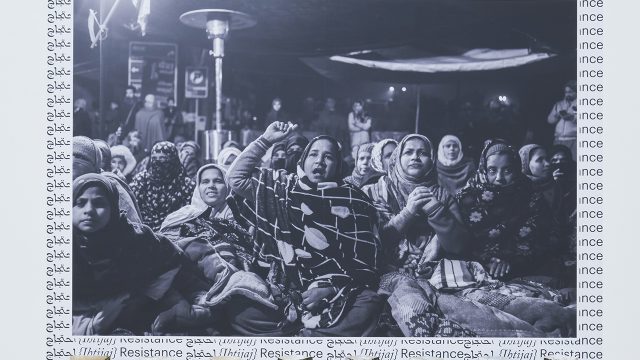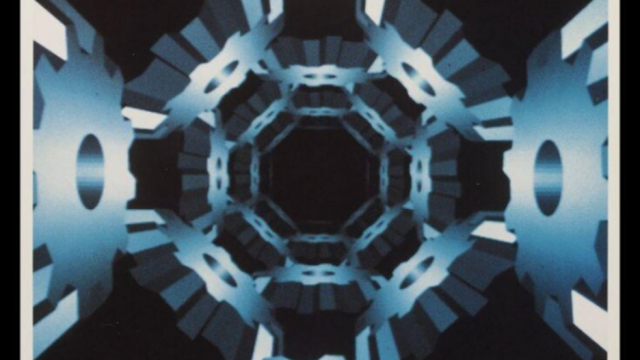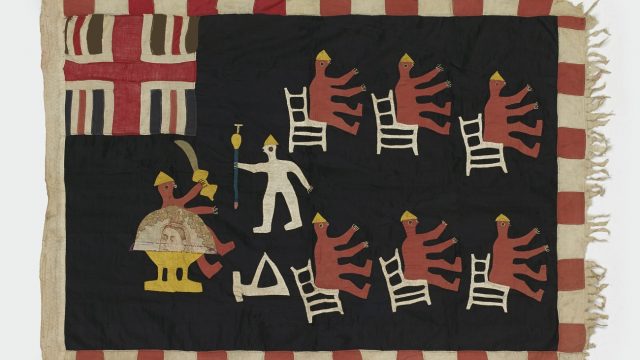In today’s blog entry I would like to explain how I examine textiles. We need to bear in mind that historical textiles are fragile and need to be handled with care, and in case of extreme fragility, we need to avoid any handling at all. Some of the textiles, for conservation reasons, have been studied through a sheet or envelope of melinex (polyester film). Others are already framed so can only be studied through glass, which does not permit complete examination and documentation (fig. 1).
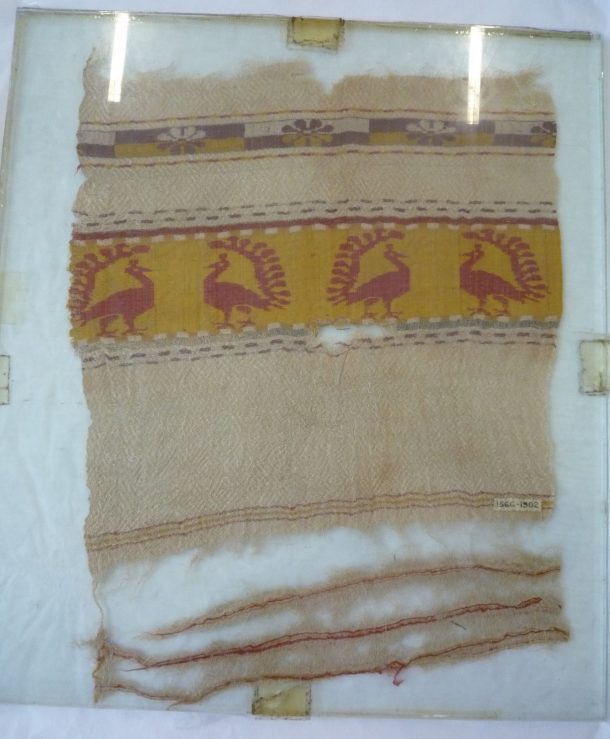
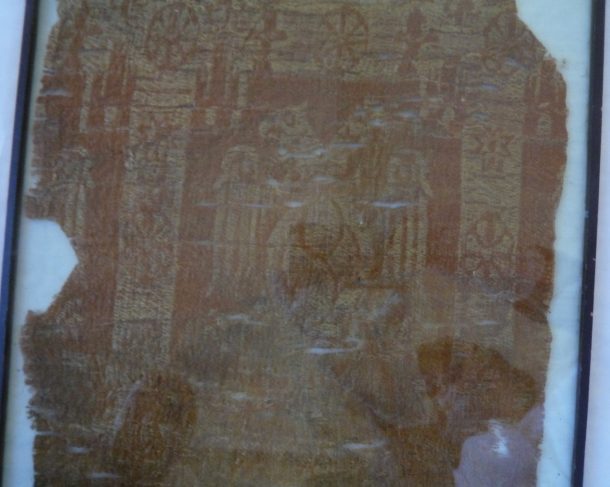
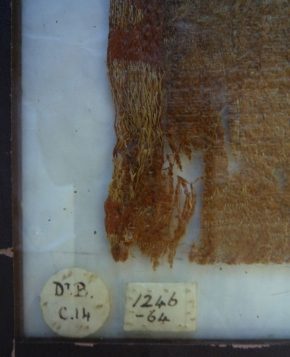
Interwoven is using digital photography to study and document textiles from Medieval Spain and the Mediterranean basin – velvets, ecclesiastical vestments and embroideries. Many of them have not been documented in any way – they have not been photographed, nor have technical data such as dimensions been recorded. All new data will be accessible at the end of the project online.
In general, during the 19th and mid-20th centuries textiles were studied mostly from the point of view of their decoration and how they were depicted in the paintings, rather than through an analysis of materials and techniques. These methods are still valid, but the study of actual surviving textiles, even when made up into dress or ecclesiastical vestments, can give us further information about the raw materials used (fibres, dyes and metal threads), the textile techniques or weave structures and the loom used to produce the fabric, its date and sometimes its place of production. This last is most difficult to ascertain.
So, how to proceed when you are in front a textile fragment? Firstly, we need to distinguish between the warp (the threads that are fixed on the loom) and the wefts (those that run from one side to the other of the loom, producing the weave). We usually say that the warps are the vertical threads. Meanwhile, the wefts run perpendicular to them, and this is the way in which the weave is represented in the diagrams (fig. 2). This helps us to lay the textile out in the correct orientation for study and photography.
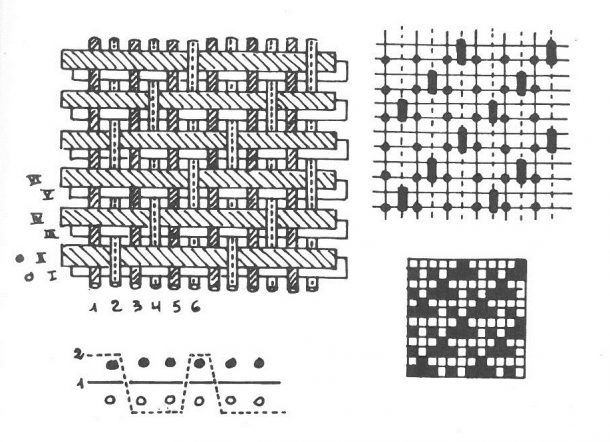
Having positioned the textile, I proceed to document the piece through digital photography (fig. 3). It is also handy to draw a sketch recording dimensions and any other relevant information relating to the documentation (Fig. 3), such as selvedges (the weft borders), warp borders and additional decorative wefts (Fig. 4), again from both sides (if possible). To study the threads, I use a magnifying glass that has a scale (note the lines on the photograph), which gives information about the number of threads per centimetre, the thread thickness, its twist (Z or S) (fig. 5) and allows me to distinguish the fibre. This methodology is applied to archaeological and historical textiles and is taught in different places, such on the technical courses run by the CIETA in Lyon or at the Leiden Textile Centre.
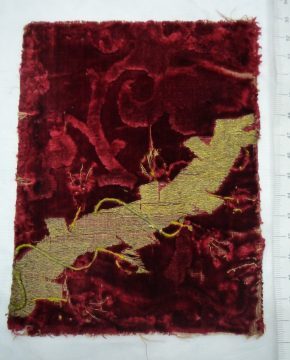
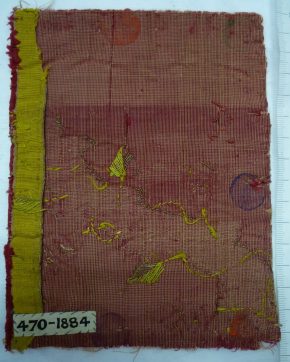
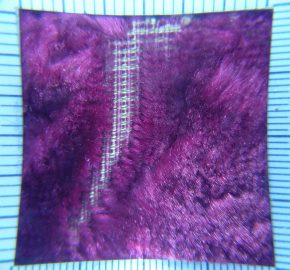
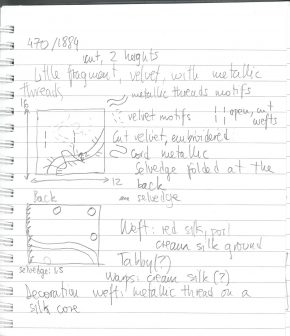
Textiles come in different forms. They may be made with one fibre and one type of thread or with different kind of threads, two sets of warps, several wefts (patterned, brocaded, …), so it is important to document, if possible, all data.
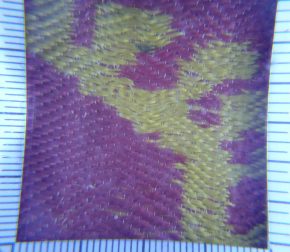
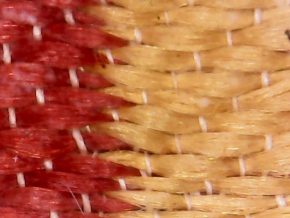
From the 1970s, the development of the analysis of techniques to characterise materials, mostly relating to the restoration of artworks, has brought new insights to historical textiles and the opportunity to have multidisciplinary teams working on them. Collaboration with physicists, chemists, and other scientists helps us to understand the raw materials. With their help and that of their microscopes, we can distinguish among the different fibres — silk, wool, cotton, linen, etc. – with a Scanning Electronic Microscope (SEM) which can detect the type of fibre and metal threads (Fig. 5) and their metal composition. Through the form of chemical analysis known as chromatography, we have information about the different dyes (plant, insect, mollusc or chemical) used to colour the fibres. Also, we can date the textile by using Carbon-14 analysis, which tells us when the fibre was cut from the plant or the animal.
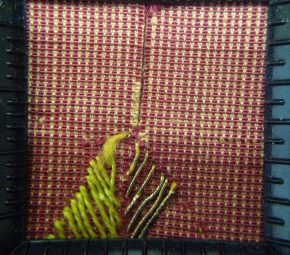
For these kinds of analysis, a sample needs to be taken from the textiles, and destroyed during the analysis. As a result, decisions about what textiles are suitable for analysis is a team effort, discussed by curators, conservators and scientists. Sometimes the textile is not suitable for analysis due to its condition, for example, old restoration work may have contaminated the samples. The application of science to the analysis of artworks has developed greatly during the last decades and now the search is for new non-destructive methods to analyse the materials (such as the one at the British Museum or analysis carried out by this project in collaboration with the No, the first one is the used of multispectral photography British Museum Laboratories.
What kind of information can the data gathered through the study of textiles, digital photography, and technical and scientific analysis give us?
- The thickness of the thread and the treatment of the fibre tell us about the quality of the textile and provide economic data because some fibres are more expensive than others. For example, silk was most valuable and was only cultivated in Iberia and South Italy until the early modern period while cotton was mainly imported to North Europe.
- The place of production may be identified through the selvedges (fig. 6). Weavers’ guilds in different cities across Europe regulated what the selvedges should be like on particular types of textiles. The best-known example is Italian velvets, for example, the Genoese guild stipulated the marks on velvets in 1572 in this way (Monnas, 2012, p. 25):
Velvets with one pile warp one gold thread per selvedge/Velvets with one and a half pile warps two gold threads in one selvedge and one in the other/Velvets with two piles warps: two gold threads in each selvedge…
IThe velvet has a specific warp, thicker than the ground warps, known as pile warp, that produces a loop. This loop can be cut or uncut depending of the design (fig. 3).
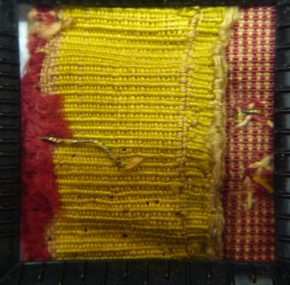
Results from the analysis of raw materials give us an idea of the provenance of the silk. In the Middle Ages and the early modern period it was cultivated only in Iberia and the south of Italy, while cotton was only cultivated in Iberia and Egypt. During the medieval period, natural dyes differ from one geographical area to another, for example, in Iberia red colour was obtained mostly from kermes (an insect that grows on oak-type trees), meanwhile Italy used madder (a plant) as a red dye and Armenian cochineal for the velvets, and Egypt used mostly madder, etc.
But all this data needs to be combined with the study of the pattern, context, written sources, similar textiles, etc. to arrive at some ideas about which kind of loom was used, where the textile was produced, and the value of the textile, and whether this textile and its decoration were highly fashionable, etc. We also need to consider the biography of the textile – what it was for, how it was used and re-used, and how it arrived in the V&A collections.
Bibliography:
CIETA, 1979: Notes techniques, Lyon.
Anderson, E; Frei, K.M.; Gleba, M.; Mannering, U.; Nosch, M.-L. and Skals, I.: “Old textiles – New possibilities” in European Journal of Archaeology, 2010, vol. 13 (2), pp. 149-1.
De Jonghe, D. and Verhecken- Lammens, C., “Sur la technique de tissage du tissu aux paons. Une soierie losangée à bandes de samit façonnée”, in Techniques & culture, 1999, no. 34, pp. 121-137
Miller, E., 1989: Textiles. Properties and behaviour in clothing use, London.
Monnas, 2012: Renaissance velvets, London: V&A Publishing.
